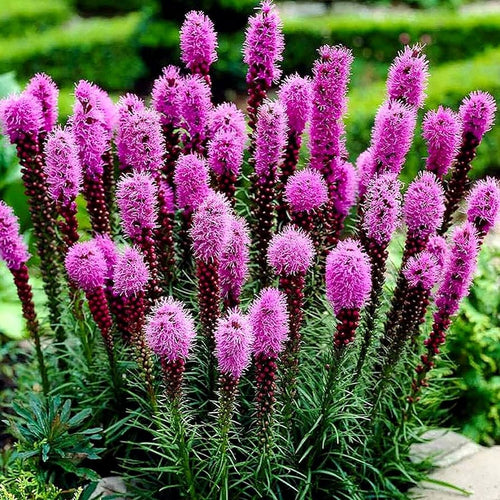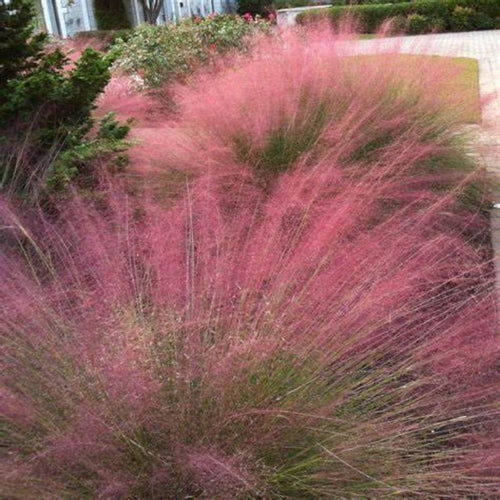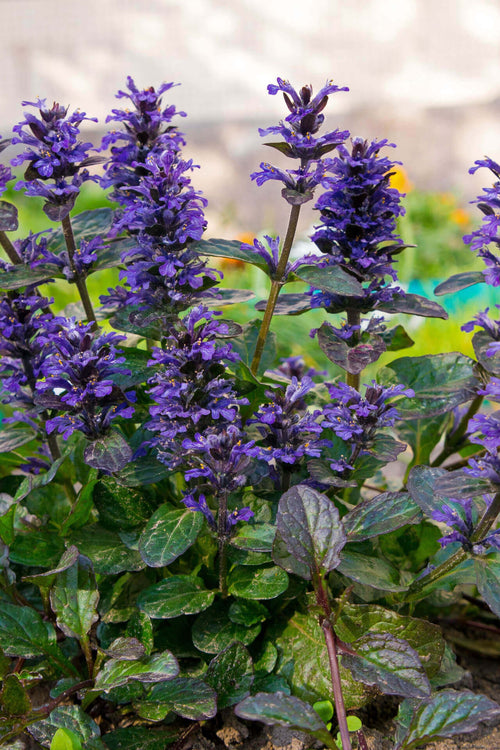Spring is a season filled with renewal, vibrant colors, and the promise of new beginnings. As you prepare to transform your garden into a lively oasis bursting with blooms, consider incorporating a variety of spring planting flowers to enhance the beauty of your outdoor space.
Whether you are a seasoned gardener or a novice enthusiast, these exquisite flowers will not only elevate the aesthetics of your garden but also provide a source of joy and tranquility as you immerse yourself in nature's wonders.
Preparing Your Garden and Soil for Spring Planting Flowers
As the days grow longer and the temperatures start to rise, it's time for you to prepare your garden for the planting season. Before you start selecting your spring planting flowers, get your garden beds and soil ready to ensure optimal growth and blooming success.
Clear Out Debris
To prepare the garden for spring, clear away any debris, fallen leaves, and weeds that may have accumulated over the winter months. This action creates a clean canvas for your new plants to thrive and prevents unwanted pests or diseases from taking hold.
As you actively remove the debris, you create an ideal environment for the growth of your plants and eliminate potential obstacles that could hinder their development. Regularly clearing out debris also enhances the overall appearance of your garden, providing a tidy space for you to enjoy.
Enrich the Soil
Ensure the success of your garden by testing your soil to determine its pH levels and nutrient content. Amend the soil with organic matter such as compost or aged manure to improve its structure and fertility.
Enriching the soil with these organic materials provides the necessary nutrients for robust plant growth and vibrant blooms. This active approach optimizes the soil's health and allows your plants to thrive by actively supplying them with the essential elements they need to flourish.
Apply Mulch
Take a proactive approach to garden care by applying a layer of mulch around your flower beds. This action conserves moisture, suppresses weed growth, and regulates soil temperature. It creates a protective barrier that helps the soil retain moisture and reduces the need for frequent watering.
It also actively inhibits weed growth, preventing these unwanted plants from competing with your flowers for resources. Mulching also adds a decorative touch to your garden, creating a polished and visually appealing look that enhances its overall beauty.
Assess Sunlight and Water Regularly
Actively assess the sunlight exposure in your garden and choose spring planting flowers that thrive under the available light conditions. Sunlight assessment ensures that you select the right plants that will flourish in your garden.
Regular watering for newly planted flowers is also needed. Establish a regular watering schedule based on the moisture needs of your chosen plants, actively monitoring and adjusting as necessary. When doing so, you actively support their growth and ensure their health and vitality throughout the season.
Best Flowers to Plant During Spring
When it comes to selecting the best flowers to plant during spring, there is a diverse array of perennials that will thrive in your garden and delight your senses with their beauty and fragrance. Here are some of the top spring planting flowers that are ideal for elevating your outdoor space:
Gayfeather Liatris
Enhance your garden with the exquisite spike-like flowers in captivating shades of purple, pink, and white that characterize the Gayfeather Liatris. This enduring perennial actively attracts butterflies and bees, making it an ideal pollinator-friendly choice for spring planting that actively introduces vertical interest and vibrant bursts of color to your garden landscape.
For the optimal growth of Gayfeather Liatris, water the plant regularly. Take the active step of maintaining consistently moist soil, ensuring it is not waterlogged. Consistently removing spent blooms, a process known as deadheading, will actively encourage the plant to produce new blooms, enhancing its visual appeal and overall vigor.
While the Gayfeather Liatris typically requires minimal fertilization, incorporating compost or well-rotted manure into the soil annually can enhance soil quality. This proactive approach aids in promoting healthy growth and vitality within the plant, ensuring that it thrives and produces an abundance of captivating flowers.
Regular watering, deadheading, and soil enrichment can encourage its flourishing presence in your garden throughout the seasons.
Purple Love Grass
Add charm to borders, rock gardens, and containers with the Purple Love Grass. Its exquisitely delicate purple plumes and gracefully arching foliage make it a low-maintenance perennial that thrives under the full sun and in well-drained soil. This versatile and effortlessly growing option actively adds charm to any spring planting endeavor.
For the optimal growth of the Purple Love Grass, water the plant regularly, especially during periods of drought. Providing consistent moisture supports its well-being and vitality, ensuring it thrives and flourishes with its characteristic purple plumes and graceful foliage.
To enhance the plant's overall health, fertilize it once a year using a balanced fertilizer. Incorporating this nutritional boost into its care regimen provides the necessary nutrients for its growth and radiance, enabling it to reach its full potential.
In colder climates, cut back the foliage in late fall to prevent winter damage. This protects the Purple Love Grass from potential harm caused by harsh winter conditions, allowing it to regrow and thrive in the following spring.
Through consistent watering, fertilization, and winter maintenance, you actively promote its enchanting presence in your garden, ensuring it adds charm and beauty season after season.
Ajuga Reptans
Add texture and color to shady areas of your garden with the glossy, variegated foliage and striking blue flower spikes of Ajuga Reptans. This versatile ground cover plant actively thrives in areas with partial shade, making it an excellent choice for planting under trees or in other shady spots. Its lush, carpet-like growth habit actively adds a touch of elegance and requires minimal maintenance for your convenience.
To ensure the health of Ajuga Reptans, avoid overwatering, as excessive moisture can lead to root rot. However, actively watering the plant regularly provides the necessary hydration it needs to thrive. By striking the right balance in terms of watering, you support the plant's vitality and prevent potential water-related issues.
To maintain the plant's visual appeal and encourage continued blooming, take proactive measures by removing spent blooms. Cut back the flower spikes as close to the base of the plant as possible. Performing this maintenance task promotes the plant's ability to produce new blooms and further enhance its aesthetic charm.
Every few years, proactively divide the plant to prevent overcrowding, which can inhibit its healthy growth. This helps to maintain the plant's vigor, prevent competition for resources, and preserve its overall vitality.
Fall is an ideal time to apply a layer of mulch around the plant. This creates a protective barrier that shields the Ajuga Reptans from extreme temperature changes during the winter months, actively enhancing its ability to thrive.
With appropriate watering, deadheading, occasional division, and mulching, you can sustain its texture, color, and overall allure, creating a lush and visually appealing space in your garden during all seasons.
Caring for Your Spring Planting Flowers
Once you have selected and planted your spring flowers, provide them with the care and attention they need to flourish and bloom abundantly. Here are some tips to ensure the longevity and vitality of your garden blooms throughout the spring season:
Regular Watering
Regular watering maintains the health of spring planting flowers. Keep an eye on soil moisture levels and water consistently to prevent drying out, but be cautious not to overwater, which can cause root rot. Check the soil by feeling the top few inches and water if it is dry.
Thoroughly soak the root area, avoiding water on the foliage to prevent disease. Underwatering leads to wilting and death while overwatering hampers oxygen flow to the roots.
Allow soil to partially dry between waterings, ensure good drainage, and adjust watering during rainy periods. Mindful watering promotes healthy growth.
Fertilization
Promote healthy growth and vibrant blooms in your spring planting flowers by feeding them with a balanced fertilizer. Apply the fertilizer according to the manufacturer's guidelines for rates and timing, following them to avoid overfeeding, which can harm your plants. With the necessary nutrients through fertilization, you support robust growth and enhance the quality of the blooms.
Remember to regularly monitor the condition of your plants and adjust the fertilization schedule as needed. Proper fertilization ensures the optimal development of your spring planting flowers, contributing to their overall health and beauty.
Deadheading and Pruning
Regularly removing spent flowers and dead leaves from your plants encourages continuous blooming and maintaining their overall health. Deadheading, as it is called, redirects the plant's energy from developing seeds to growing new buds, thus promoting more blooming. Pruning also helps shape the growth of your plants and keeps them looking neat.
As you remove unwanted or damaged stems, you improve air circulation, reduce the risk of pest or disease infestations, and stimulate healthy growth. Regularly deadheading and pruning your spring planting flowers support their vitality and ensure a beautiful display for long periods.
Pest Control
To control pests effectively, actively monitor your plants for signs of infestations or diseases. Take immediate action to address any issues that arise. It is advisable to use organic pest control methods whenever possible as this ensures the protection of beneficial insects and pollinators within your garden.
Regularly inspecting your plants allows you to identify pests at an early stage and intervene before significant damage occurs. Utilizing organic pest control methods, such as introducing beneficial insects or using organic sprays, assists in mitigating the spread of pests while minimizing the negative impact on the ecosystem.
Stay vigilant and employ organic pest control techniques to maintain a healthy and thriving garden environment.
Support and Stake
Some spring flowers may require support or staking to prevent their stems from bending or breaking under the weight of their blooms. To prevent their stems from bending or breaking under the weight of their blooms, some spring flowers may require support or staking.
Early in the growth process, install stakes or plant supports to provide necessary structural support and maintain the beauty of your flowers. By doing so, you will be able to keep the stems upright and prevent them from tangling or falling over.
Properly supporting your spring flowers ensures that they can grow and bloom without the risk of damage or distortion. Regularly check the growth progress and adjust the stakes or supports as needed to accommodate the expanding size of the plants.
Tips for a Healthy and Beautiful Garden
Enhance the health and beauty of your garden with companion planting and proper maintenance. Here are some tips to keep your garden healthy during spring.
Consider Companion Planting
Companion planting is a gardening practice that involves strategically selecting and placing different plants together based on their ability to benefit from each other. This technique can help create a healthier and more vibrant garden by taking advantage of the qualities and interactions between specific plant species.
One aspect of companion planting is pest control. Some plants possess natural properties that repel specific pests, while others attract beneficial insects that prey on pests. Interplanting pest-repellent and pest-attracting plants can create a natural defense mechanism to keep harmful insects at bay.
For example, planting marigolds alongside vegetables can repel aphids, while attracting ladybugs that feed on those aphids, effectively protecting your crops.
Companion planting also considers the physical benefits of interplanting. Taller plants can offer shade and act as windbreaks for more delicate or sun-sensitive plants. Creating microclimates and providing protection from harsh elements improve the overall growth and health of your garden.
Practice Proper Garden Maintenance
Proper garden maintenance goes beyond basic watering and fertilization. It involves various tasks that are essential for keeping your garden healthy, thriving, and aesthetically pleasing throughout the season. Here are some key components of garden maintenance.
Weeding
Weeds compete with your plants for nutrients, water, and sunlight. Regular weeding is necessary to prevent weeds from overtaking your garden beds and choking the growth of your desired plants. Pulling weeds by hand or using appropriate weeding tools helps keep your garden looking neat and ensures that your plants have the best chance of thriving.
Mowing the Lawn
If you have a lawn in your garden, regular mowing maintains its health and appearance. It helps control weed growth, encourages thicker grass growth, and prevents the lawn from becoming overgrown and uneven. Be sure to follow the recommended mowing height for your type of grass and avoid cutting it too short, as this can damage the lawn.
Regular Inspections
Regular inspection of your plants identifies and addresses any issues that may arise, such as pest infestations, diseases, or nutrient deficiencies. Observing your plants closely can catch problems early on and take appropriate action to prevent further damage. Regular inspections also help you stay connected with your garden and understand its specific needs.
Get Your Spring Planting Flowers Today
As you spruce up your garden for the spring season, consider incorporating a variety of spring planting flowers to add vibrancy and beauty to your outdoor space. From the captivating Gayfeather Liatris to the charming Purple Love Grass and the textured Ajuga Reptans, these flowers will elevate your garden and provide a source of joy and tranquility.
Now is the perfect time to start shopping for your spring planting flowers. Visit TN Nursery today and explore our wide selection of flowers that will transform your garden into a lively oasis. Shop now and bring your garden to life!




















































